Are you looking to turn your thumb green and let your garden bloom? Look no further than our easy-to-follow gardening guides! Our comprehensive guides cover a range of topics to help you develop the skills you need to master the art of gardening.
Our guides provide a wealth of information on organic gardening techniques, including planting a garden, starting seeds indoors, companion planting, organic pest control, and more. We also cover container gardening essentials and water-saving techniques, as well as tips for seed saving and food storage.
If you’re a gardener on the move, our guides also include a step-by-step guide to setting up a portable garden. Portable gardening offers flexibility, reduced pest and disease problems, and is suitable for those with limited outdoor space.
Don’t believe the myth of the “green thumb,” gardening is a skill that can be learned and mastered. To get started, we recommend beginning with herbs and greens. They are quick to produce and easy to grow, making them the perfect starting point for learning how to garden organically.
Key Takeaways:
- Our gardening guides cover a range of topics, from organic gardening techniques to container gardening essentials.
- Portable gardening offers flexibility, reduced pest and disease problems, and is suitable for those with limited outdoor space.
- Gardening is a skill that can be learned and mastered, starting with herbs and greens.
Tips and Tricks for Organic Gardening
Our gardening guides provide a wealth of tips and tricks for organic gardening, including how to plant a garden, start seeds indoors, utilize companion planting, practice succession planting, and implement effective organic pest control methods. Here are some additional tips for successful organic gardening:
- Choose the right containers: When starting a portable garden, select containers that are easily movable and suitable for the plants you want to grow. This allows you to move your plants to the optimal location for light and temperature.
- Select the right plants: Opt for plants that can thrive in containers, such as herbs, dwarf fruit trees, and many vegetables. Consider the space and lighting requirements of each type of plant.
- Proper potting: Use high-quality potting soil and ensure adequate drainage to promote healthy plant growth. This is especially important for container plants, which can easily become waterlogged.
- Regular maintenance: This includes watering, pruning, fertilizing, and regularly checking for pests or diseases. Keep a regular schedule for maintenance tasks and adjust as needed.
- Flexibility: Portable gardens allow you to rearrange the layout based on the needs of the plants or for aesthetic purposes. Make sure your containers are easily movable for maximum flexibility.
- Less disease and pest problems: Portable gardens often face fewer issues with soil-borne diseases and pests, making organic gardening easier.
- Ideal for limited spaces: Portable gardens are a perfect solution for those with small yards or living in apartments. You can also garden on balconies and patios with portable containers.
- Ease of maintenance: With plants in containers, tasks such as weeding and pest control become much more manageable. Additionally, you can control the soil quality and other environmental factors to optimize growth.
- Consistent attention and care: Movable gardens require consistent watering and fertilizing due to the increased watering requirements of container plants. Make sure to water regularly and check soil moisture levels frequently.
- Adapt to changes: Be ready to adjust your choice of plants and care practices based on the climate and conditions of your new location. Monitor your plants closely and adjust care as needed.
- Start with herbs: Herbs are easy to grow and quick to produce, making them a great way to begin your organic gardening journey. Consider basil, parsley, thyme and rosemary.
- Grow greens: Leafy greens like lettuce, arugula, and spinach are easy to grow and offer a delicious addition to your garden and meals. They can also be grown year-round indoors or in containers.
By following these tips and tricks, you can create a successful and thriving organic garden, no matter your gardening experience or available space. Remember to keep consistent attention and care, while being flexible and adaptable to changes in your environment. Happy gardening!
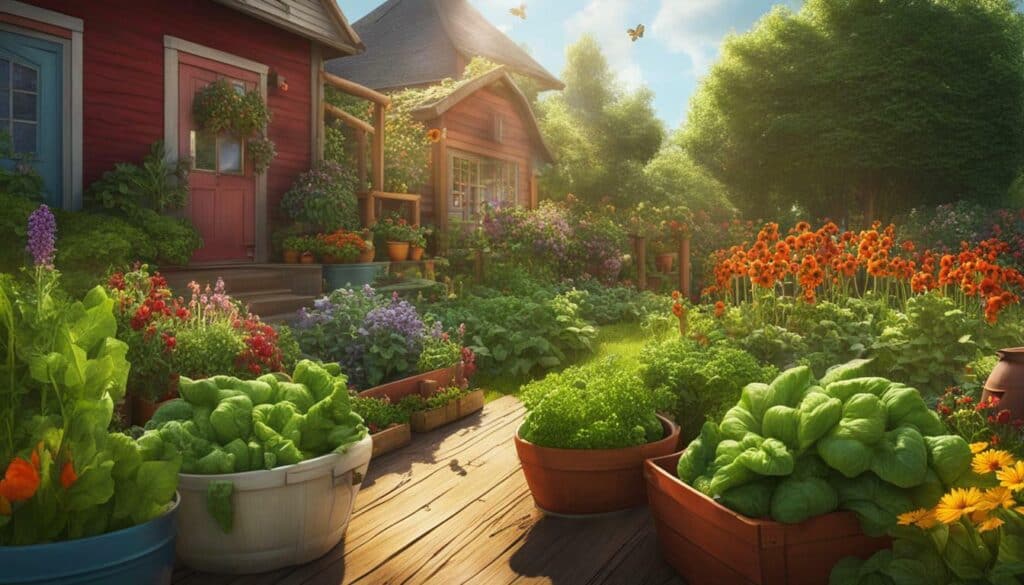
Container Gardening Essentials
Explore the world of container gardening with our comprehensive guides, offering innovative ideas and highlighting the essential tools and equipment needed for successful container gardening. Container gardening is a versatile and practical solution for gardeners with limited space or those who want to experiment with different plant varieties. With the right containers and proper care, you can grow almost anything from herbs, flowers, vegetables, and even small fruit trees.
The first step in successful container gardening is selecting the right container. A container should be large enough to accommodate the plant’s root system, have sufficient drainage holes, and be made of durable materials that can withstand extreme temperatures and weather conditions. Some popular container materials include terracotta, plastic, metal, and wood.
| Tools and Equipment | Description |
|---|---|
| Gloves | Protect your hands from dirt, cuts, and scratches while gardening. |
| Trowel | A hand-held digging tool for planting and transplanting. |
| Pruners | Useful for trimming branches, deadheading, and shaping plants. |
| Fertilizer | Choose a suitable fertilizer for your specific plants and follow the recommended application instructions. |
Other essential tools and equipment include a watering can or hose, potting soil, plant labels, and stakes or trellises for support. When selecting plants for container gardening, consider their size, growth habits, and sun and water requirements. Some plants that do well in containers include tomatoes, peppers, herbs, and salad greens.
Proper potting is crucial for successful container gardening. Use a high-quality potting mix that has good drainage and aeration properties. Fill the container about 2/3 full of soil, place the plant in the center, and add more soil around the plant until it is at the same level as the soil in the pot. Gently press down the soil to eliminate air pockets and water thoroughly.
Regular maintenance is also essential for container gardening success. Water the plants regularly, but avoid overwatering to prevent root rot. Check for pests and diseases regularly and take appropriate action if necessary. Deadhead spent flowers and prune as needed to promote healthy growth.
Portable gardens are a flexible and convenient solution for those who relocate frequently or have limited space. They can be easily moved to a new location or brought indoors during extreme weather conditions. With the right knowledge and tools, container gardening can bring endless joy and tranquility to gardeners of all levels.
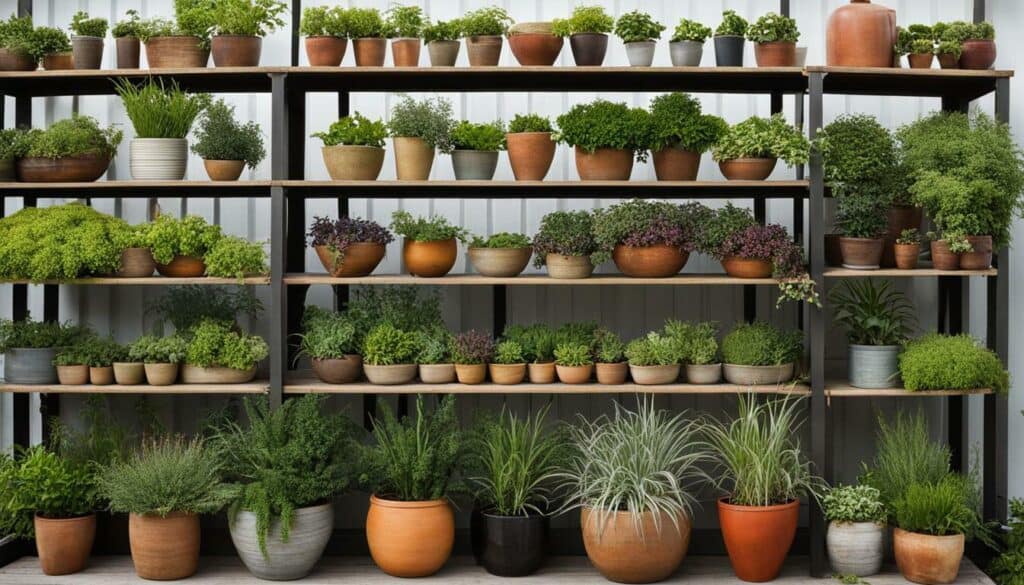
Looking for more container gardening ideas and resources? Check out our ebooks and guides on organic gardening, water-saving techniques, expert gardening techniques, and seed saving and food storage. Start small by growing herbs, which are easy to grow and require less sunlight and nutrients. Greens are also great for learning how to garden organically. With the right knowledge and the right containers, container gardening can be an enjoyable and rewarding experience.
Water-Saving Techniques
Discover effective water-saving techniques and explore the benefits of portable gardening as a solution for maintaining a garden while being conscious of water usage. As a sustainable gardening practice, water-saving techniques are essential for optimal plant growth and healthy ecosystems. One way to conserve water is through portable gardening, which involves cultivating plants in containers instead of traditional in-ground beds.
This innovative solution allows for flexibility in terms of plant selection and garden layout. With portable gardening, gardeners can move their plants to sunny or shaded areas depending on their specific needs, which can be especially useful for those with limited outdoor space. Proper potting and regular maintenance, including watering, pruning, fertilizing, and pest control, are crucial for the success of portable gardens.
Additionally, focusing on growing herbs and greens is a great way to start gardening, as they are easy to grow, require less water, and provide continuous harvests. By using the right potting soil and containers, gardeners can maximize their water usage and reduce waste. With the right techniques, gardeners can enjoy a bountiful harvest while reducing their water use, and contributing to conservation efforts.
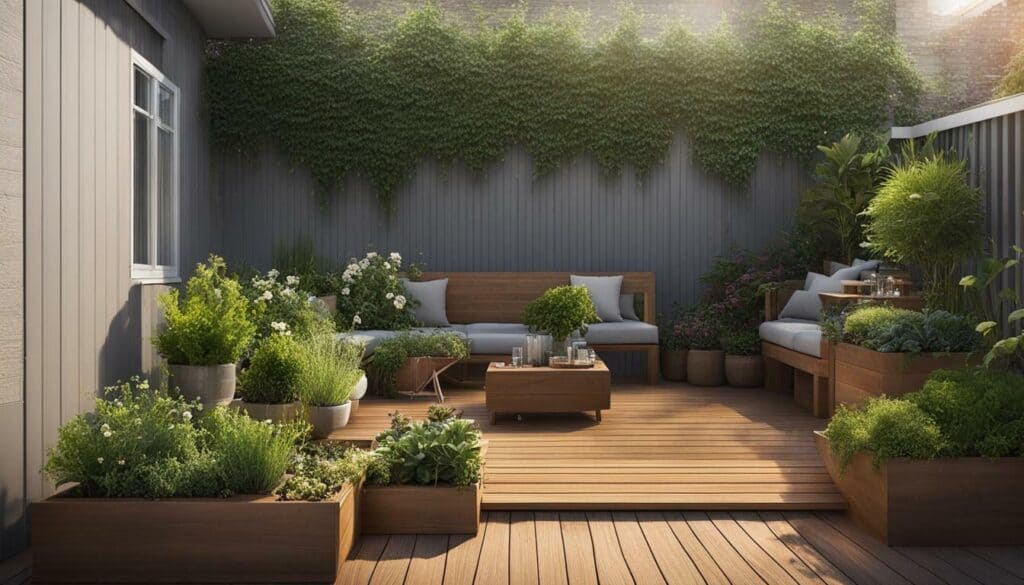
By implementing these water-saving techniques, gardeners can maximize their water usage and contribute to conservation efforts. Not only is it important for the environment, but it can also save gardeners money on water bills. With the benefits of flexibility, reduced disease and pest problems, suitability for limited spaces, and ease of maintenance, portable gardening is an efficient and sustainable way to cultivate a beautiful and thriving garden while being mindful of water usage.
Debunking the Green Thumb Myth
Let’s debunk the green thumb myth and discover how gardening is a skill that can be learned and mastered, starting with easy plants like herbs and greens.
The concept of having a “green thumb” and being naturally skilled at gardening is a common belief, but is it actually true? The myth of the green thumb originated from two theories. One suggests that the idea came from the green algae that grows on the outside of pots, staining people’s fingers green. The other theory dates back to King Edward the First, who supposedly rewarded the servant with the greenest thumb for shelling peas. However, the truth is that gardening is a skill that can be learned and mastered by anyone.
There are several steps one can take to become a successful gardener, starting with growing herbs. Herbs are typically easy plants to grow and can be a great way to start a kitchen garden. They don’t require a lot of sunlight or nutrients, making them suitable for small spaces. Starting with herbs can build confidence and pave the way for growing other plants.
Once comfortable with herbs, the next step is to try growing greens. Salad greens, such as lettuce, arugula, spinach, and kale, are easy to grow and offer a taste superior to store-bought greens. They can be grown in containers or raised beds and provide a continuous harvest with “cut and come again” methods.
Maintaining a movable garden, especially for frequent movers, is another way to indulge in gardening. Portable gardens, cultivated in containers, offer flexibility and make it easier to rearrange the layout and overcome limited space constraints. It also reduces the risk of soil-borne diseases and pests.
Contrary to the myth of the green thumb, gardening is a skill that can be learned and improved over time. Whether starting with herbs, growing greens, or maintaining a portable garden, anyone can become a successful gardener with the right knowledge and dedication. Gardening truly knows no boundaries and can be enjoyed by all.
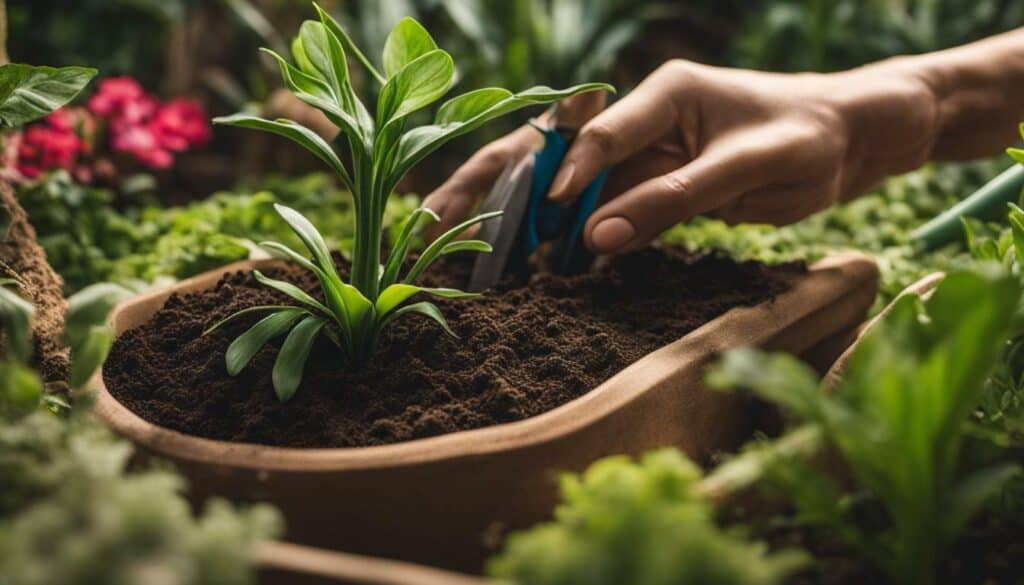
Growing Herbs and Salad Gardens Organically
Our gardening guides provide in-depth information on growing herbs and salad gardens organically, ensuring a bountiful harvest and delicious flavors. As a popular trend in gardening, growing herbs and salad gardens organically offers numerous benefits, such as providing fresh and healthy produce, reducing exposure to harmful chemicals, and promoting sustainability.
For beginners, herbs are a great starting point as they are typically easy to grow and maintain. They can be grown from seeds or purchased as mature plants. Some easy-to-grow herbs include basil, cilantro, mint, sage, and chives. These herbs can be grown in containers, on windowsills, or on balconies, making them suitable for small-space gardening.
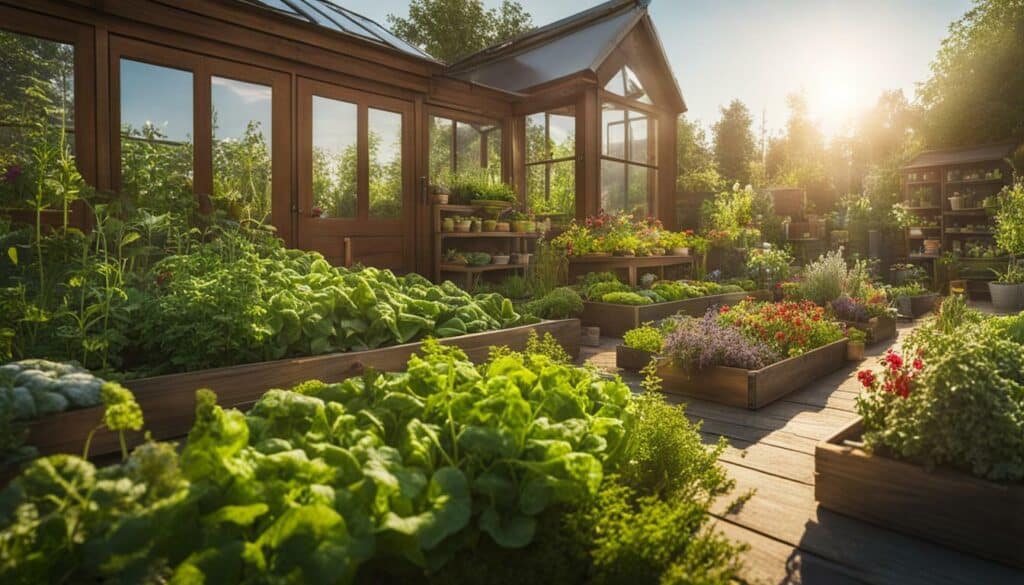
Salad greens are also a great addition to an organic garden. Lettuce, arugula, spinach, chard, kale, collards, and cabbage are all excellent choices. These greens are “cut and come again”, meaning they can be harvested multiple times. However, it is important to be mindful of pests that may affect the growth of these plants. By utilizing proper techniques and organic pest control methods, gardeners can successfully grow herbs and salad gardens organically.
The Comprehensive Guide to Gardening Techniques
Dive into the world of gardening techniques with our comprehensive guides, covering everything from basic methods to expert gardening techniques for achieving outstanding results in your garden. Whether you are a beginner or an experienced gardener, these tips and tricks will help you improve your gardening skills and make your garden flourish.
Organic gardening is a popular trend among gardeners, and for good reason. It involves cultivating plants without the use of synthetic fertilizers, pesticides, or genetically modified organisms. Starting a garden can seem like a daunting task, but our guide provides easy-to-follow steps for planting a garden, starting seeds indoors, companion planting, and succession planting. Additionally, it recommends organic pest control methods for keeping harmful insects at bay and lists expert gardening techniques for optimal results.
| Tip: | Try companion planting with marigolds, which repel harmful insects. |
|---|---|
| Expert Technique: | Try intercropping, which involves growing two or more crops in the same space to benefit each other. |
Container gardening is an ideal solution for those with limited outdoor space, or for those who want to add greenery to their patios, balconies, or other small areas. Our guide covers various container gardening ideas and the necessary tools and equipment for successful container gardening.
Water-saving techniques are also essential for those who live in areas prone to drought conditions or for those who want to reduce their water usage. Portable gardening is a great solution for those who want to relocate but still maintain a garden. Our guide includes tips for starting a portable garden and outlines the benefits and considerations of this method.
Contrary to popular belief, a “green thumb” is not innate, but rather a skill that can be learned and mastered. Our guide debunks the myth of the “green thumb” and highlights the ease of starting with herbs and greens to develop gardening skills. We provide specific guides for growing herbs and salad gardens organically, as well as recommend additional resources and online courses for creating and maintaining herb and salad gardens.
- Tip: Start with easy-to-grow herbs like basil, cilantro, and parsley.
- Recommended Resource: Check out our ebook on herb gardening for more in-depth information.

In conclusion, the comprehensive guide to gardening techniques provides a wealth of information for both beginner and experienced gardeners. From organic gardening to container gardening, water-saving techniques to herb and salad gardening, our guide covers everything you need to know to take your gardening skills to the next level. Explore our tips and tricks for expert gardening techniques and let your garden thrive!
Portable Gardening Benefits and Considerations
Discover the advantages of portable gardening, including its flexibility, ability to minimize disease and pest problems, suitability for limited spaces, and easy maintenance. Portable gardening refers to cultivating plants in containers rather than in-ground beds, allowing for flexibility and mobility. It has gained popularity as a solution for gardeners who frequently relocate. Setting up a portable garden involves choosing the right containers and plants, using quality potting soil, and regular maintenance such as watering, pruning, and pest control.
The benefits of portable gardening are numerous. For those who live in apartments or have limited outdoor space, it allows for the pleasure of gardening without the need for a large backyard. Additionally, container gardens can be rearranged quickly and easily, allowing for experimentation with different layouts and designs.
Another benefit of portable gardening is the reduced risk of disease and pest problems. Container gardens are isolated from the soil and other plants, minimizing the spread of harmful organisms. This makes it easier to maintain a healthy garden, while also reducing the need for pesticides and other harmful chemicals.
Portability also means that gardeners can take their plants with them when they move, ensuring that their hobby can continue regardless of their location. This flexibility is especially beneficial for those who frequently relocate or live in areas with harsh climates that may not be conducive to traditional gardening.
While portable gardening has many benefits, there are also some considerations to keep in mind. Container gardens require regular maintenance, including watering, pruning, and pest control. Adequate light and heat are also essential for plant growth and health.
Furthermore, gardeners must also be aware of potential challenges, such as changes in climate, soil quality, and plant well-being. Consistent attention and care are required to maintain a vibrant portable garden, but the rewards of a thriving container garden can be well worth the effort.
Overall, portable gardening allows for a continuation of the gardening hobby, bringing joy and tranquility regardless of the number or distance of moves. Whether you’re a novice or an experienced gardener, consider giving portable gardening a try and enjoy the benefits of flexibility, reduced disease and pest problems, suitability for limited spaces, and easier maintenance.
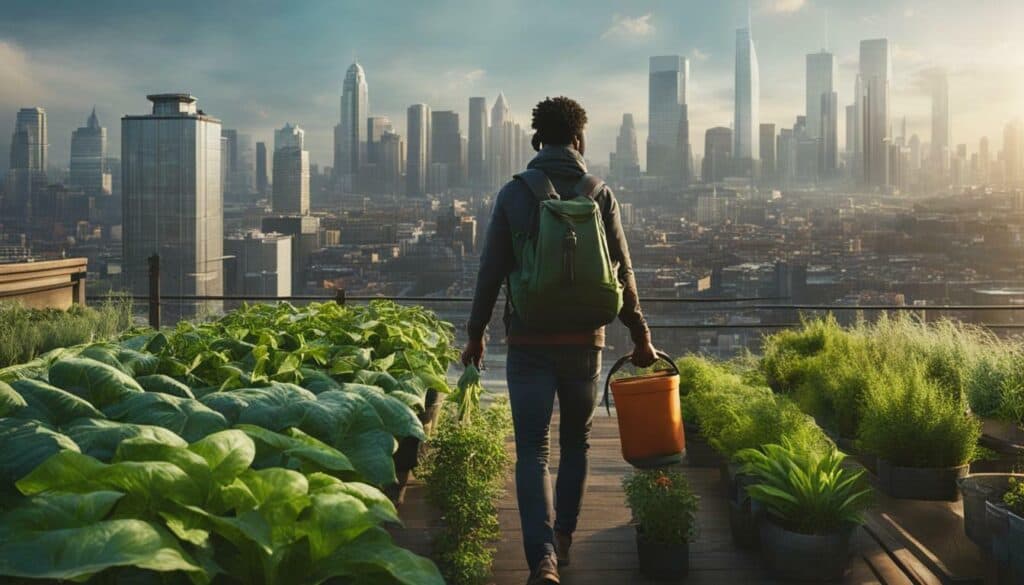
Conclusion
Our gardening guides are the key to unlocking your full potential as a gardener, helping you master the art of gardening and develop a green thumb to create a stunning and fruitful garden. It is important to remember that gardening is not a talent but a skill that can be acquired with practice and patience. The concept of a “green thumb” is a myth, originating from misconceptions about algae and King Edward the First’s love for peas.
Starting with growing herbs is an excellent way to begin a garden, as they are easy to grow and quick to produce. Greens such as lettuce, arugula, and spinach are also a great addition to a kitchen garden and can be grown in containers. With the right guidance and resources, anyone can successfully create and maintain a garden, allowing them to enjoy the benefits of gardening no matter where they may live or how frequently they move.
Our gardening guides provide the knowledge and tools necessary to start and maintain a garden. Whether you are a beginner or an experienced gardener, our guides will assist you in developing your skills and maximizing your garden’s potential. So, go ahead and let your garden bloom with the help of our expert gardening guides.
FAQ
Q: What topics are covered in the gardening guides?
A: The gardening guides cover a wide range of topics including how to plant a garden, starting seeds indoors, companion planting, succession planting, organic pest control, expert gardening techniques, container gardening essentials, water-saving techniques, seed saving, and food storage.
Q: Are there guides specifically for portable gardening?
A: Yes, there is a section dedicated to portable gardening which discusses the benefits of flexibility, less disease and pest problems, suitability for limited spaces, and ease of maintenance.
Q: Is the concept of a green thumb debunked in the gardening guides?
A: Yes, the gardening guides emphasize that gardening is a skill that can be learned and mastered by anyone. The idea of a green thumb is debunked, encouraging readers to give it a try.
Q: What plants are recommended for beginners?
A: Herbs and greens are highlighted as easy plants to start with in developing gardening skills. There are specific guides available for growing herbs and salad gardens organically.
Q: Are there tips and tricks for expert gardening techniques?
A: Yes, the gardening guides provide expert gardening techniques to help readers achieve optimal results in their gardens.
Q: How can container gardening be successful?
A: The gardening guides cover all the essentials of container gardening, including various container gardening ideas and the necessary tools and equipment for success.
Q: Are there tips for saving water in the garden?
A: Yes, the gardening guides provide water-saving techniques to help conserve water in the garden. Portable gardening is also discussed as a water-saving solution.
What Essential Information Can I Learn from Your Gardening Guides to Master My Green Thumb?
Our gardening guides contain essential gardening information to help you master your green thumb. From tips on soil preparation to plant selection and maintenance, you can learn the secrets behind successful gardening. Discover the right watering techniques, pest control strategies, and even harvesting guidelines, all designed to make your garden flourish. With our comprehensive guides, you’ll become an expert gardener in no time.
Source Links
- https://www.trianglegardener.com/green-thumb-on-the-go-maintaining-a-portable-garden-for-frequent-movers/
- https://books.apple.com/us/book/green-thumb-accepted-221-tips-and-tricks-from-master/id6447860236
- https://www.gardenary.com/blog/4-steps-to-learn-how-to-garden
- https://www.gardenguides.com/
- https://medium.com/@mohammed.touson/gardening-for-beginners-a-comprehensive-guide-to-cultivating-your-green-thumb-8bfd4f73e3a9
- https://www.spokesman.com/stories/2023/jul/12/gardening-south-hill-green-thumb-has-some-hot-tips/
- https://www.planetnatural.com/organic-gardening-guru/tips/
- https://www.allaboutgardening.com/organic-gardening-tips/
- https://anoregoncottage.com/organic-gardening-tips/
- https://www.thespruce.com/container-garden-the-essentials-847853
- https://www.bhg.com/gardening/container/basics/how-to-plant-a-container-garden/
- https://www.amazon.com/Container-Gardening-Essentials-Essential-Growing/dp/1500804665
- https://www.finegardening.com/project-guides/gardening-basics/10-ways-to-conserve-water-in-the-garden
- https://www.houzz.in/magazine/8-most-effective-water-saving-techniques-for-your-garden-stsetivw-vs~90847478
- https://www.hgtv.com/outdoors/gardens/planting-and-maintenance/25-ways-to-conserve-water-in-your-garden-pictures
- https://www.gardeningknowhow.com/garden-how-to/lifestyle/myth-of-the-green-thumb.htm
- https://www.gardenary.com/blog/007
- https://www.washingtonpost.com/home/2023/02/22/green-thumb-gardening-myth/
- https://www.gardeners.com/how-to/herb-garden/5068.html
- https://www.gardenary.com/blog/the-ultimate-guide-to-growing-herbs
- https://www.joyusgarden.com/salad-herb-container-garden/
- https://www.nal.usda.gov/plant-production-gardening/vegetable-gardening
- https://www.amazon.com/Taylors-Guide-Gardening-Techniques-Complete/dp/0395564034
- https://www.amazon.com/Gardening-Techniques-Directories-Perennials-Water-Garden/dp/1580115438
- https://www.almanac.com/content/container-gardening-vegetables
- https://theprepared.com/homestead/guides/gardening/
- https://www.betterhealth.vic.gov.au/health/healthyliving/gardening-for-older-people
- https://www.ncbi.nlm.nih.gov/pmc/articles/PMC5153451/
- https://www.ncbi.nlm.nih.gov/pmc/articles/PMC3661291/
- https://agricultureandfoodsecurity.biomedcentral.com/articles/10.1186/2048-7010-2-8

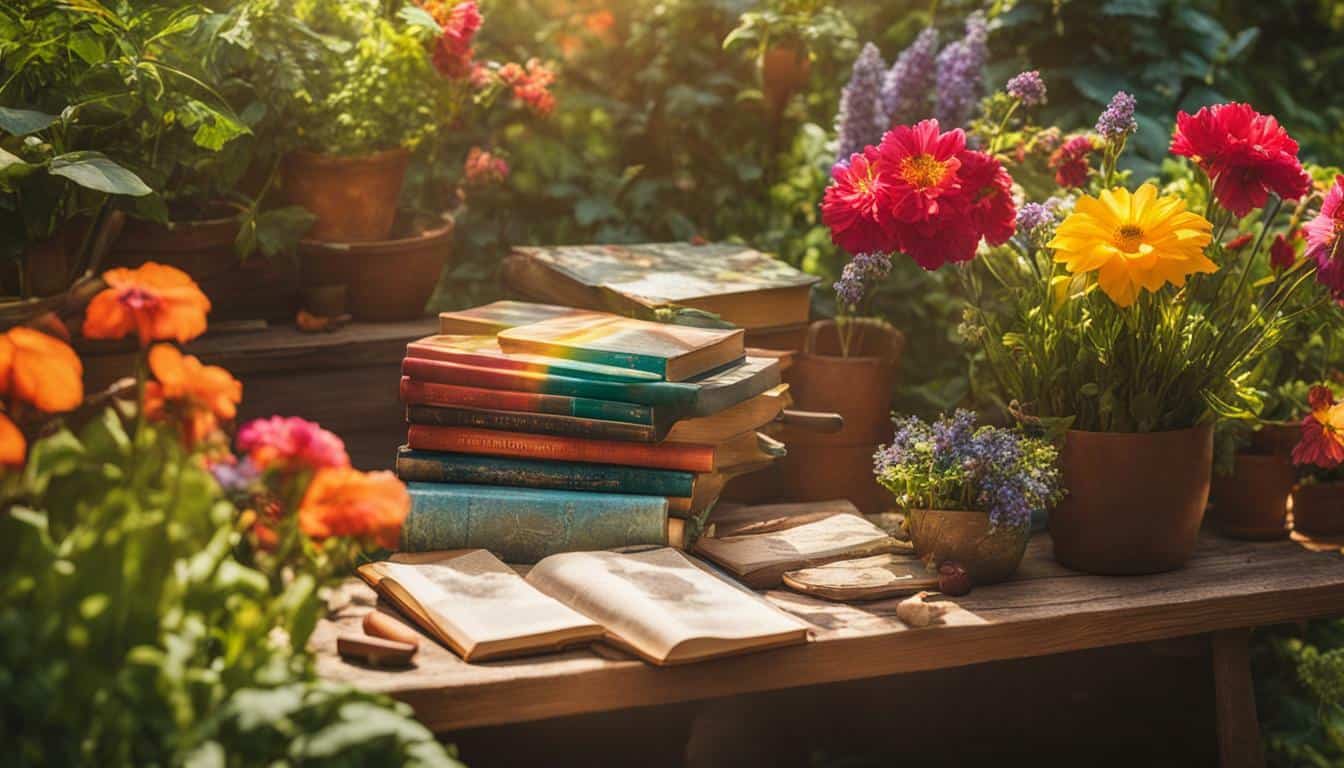



Leave a Reply